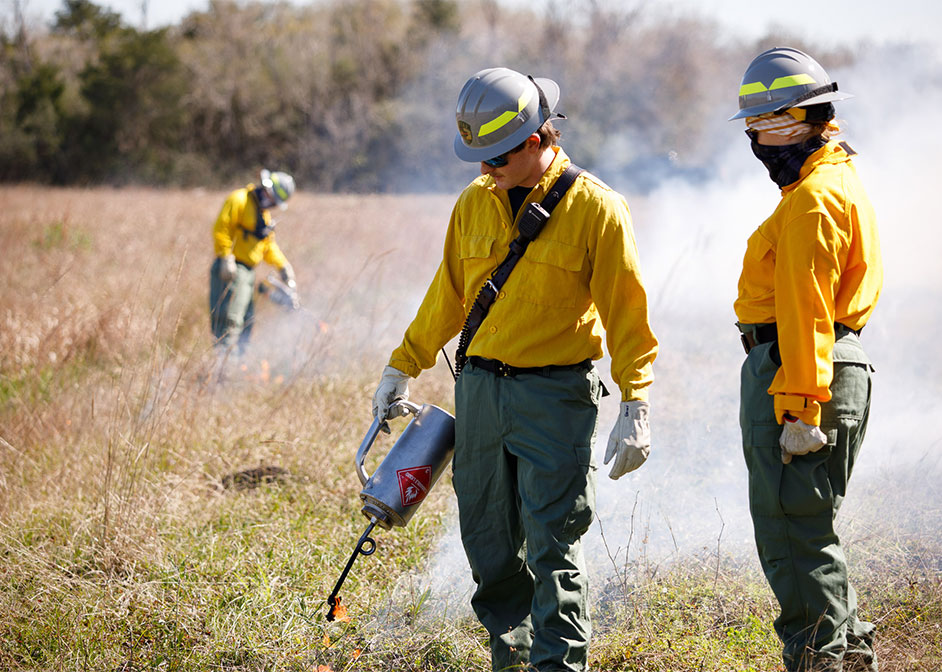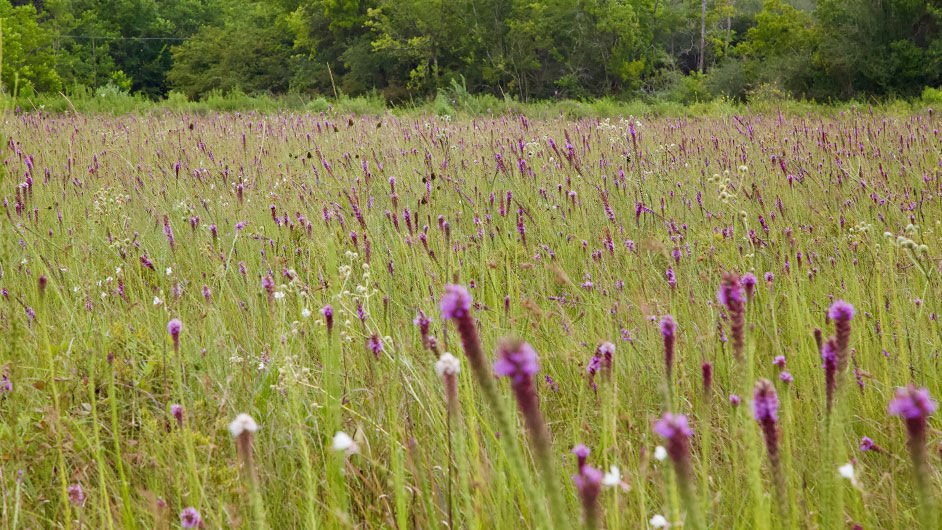How Prescribed Burns Help Rejuvenate UH’s Coastal Prairie
The UH Coastal Center (UHCC) is a hub for environmental research and education. Formally designated by the Texas legislature as the Texas Institute for Coastal Prairie Research and Education, it contains 925 acres of wetland and endangered coastal tallgrass prairie. NSM’s Dr. Steven Pennings serves as director for the center, and UH students take several research-related courses at the UHCC.

In early spring of this year, the UHCC held a prescribed burn on about 100 acres in order to encourage biodiversity on the property.
As a result, in the months that followed, the coastal prairie experienced an explosive blooming of all sorts of native flowering plants and grasses.
However, as with many living things that are destined for greatness, you couldn’t tell right away.
“When it was originally burned, the entire portion of the prairie was blackened and crispy,” said UH Coastal Center program director Evelyn Merz. “But in only five months, we have seen a quick progression from the Eastern Gamagrass and the Green Milkweed, to the Texas Coneflower and the Blazing Star, the Rattlesnake Master and the Indian Plantain. All having their place, so to speak, in the sun.”

“Historically, prairies would have been affected by both burning and grazing by large animals,” said Pennings. “Burning removes all the dead plant material that lies on the ground, and it also affects soil nutrients. The result is that grazing and fire promote different plant communities.”
With the help of drone pilot Cristian Ramos, NSM’s Communications Team, led by Kathy Major, with Rebeca Trejo and Chris Watts, has meticulously video documented every step of the burn and regrowth process. Watch their videos and learn more about the plants and flowers that bloom on the UH Coastal Center Prairie.